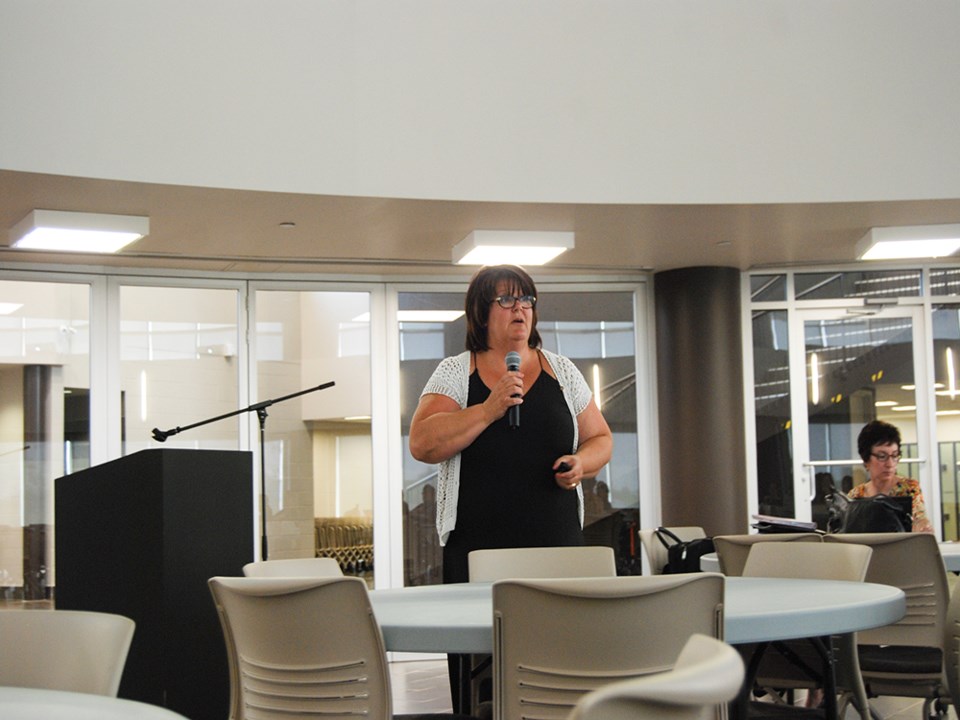Saskatchewan is one of the better provinces for finding work. The gatekeepers of immigration into the province; namely, the Government of Saskatchewan, Citizenship and Immigration Canada and �鶹��ýAVeast Newcomer Services held information sessions for employers and employees, at �鶹��ýAVeast Regional College, on the Saskatchewan Immigrant Nominee Program (SINP). Tracy Davies, a program manager, and Gisele McCarthy, an employer relations specialist with Immigration Services spoke to employees and employers respectively last Thursday. About 30 people attended the afternoon session held for employees to learn about the program.
“It allows us to nominate immigrants to become permanent residents of Saskatchewan,” said Christa Ross, acting executive director for the Immigration Services branch of the Government of Saskatchewan, over the phone with the Mercury. “It’s meant to attract and bring people to the province who have skills that are needed.”
The SINP is employer-driven, focusing on the judgement of eligibility to work and live in Canada, through the review of applications. A major focus of the program is to meet the needs of local employers and the economy.
The information they outlined specifically disclosed the rules of the program. The presentations focused on what conditions need to be met to qualify for it. Both presentations also explained how to use the online application system, since there was a significant update of the system leading to a completely new interface.
Each province and territory in Canada has their own variation on the nominee program, noted Ross. Saskatchewan, as is the case with every other province and territory, has a program designed for specific criteria that fits its own unique economic needs. When judging eligibility, Davies noted there were several factors to be taken into account: language, work experience, skill and education levels, health, and criminality. She said the program is applicable for both people considering moving to or already living in Saskatchewan.
Jhaldair Roye, information services advisor with �鶹��ýAVeast Newcomer Services noted the SINP is one of the most popular programs of its kind in Canada, which has lead to a lot of immigration
specifically to Saskatchewan.
The rather complex number of categories and subcategories that make up the program can be sorted into the following major categories: International Skilled worker, for skilled workers who want to work and live in Saskatchewan; Saskatchewan Experience, for foreign nationals already working and living in the province; and Entrepreneur and Farm, which refers to those who wish to invest in a Saskatchewan business or farm.
“In the Saskatchewan Experience group, people are on a temporary work permit and need a permanent job offer after working in the province for six months,” said Ross. “We also have a category specifically for the hospitality industry. That’s to allow temporary foreign workers who are coming here to work in that industry to apply to us after they’ve been working here for six months.”
In the presentation to employees, Davies went into extensive detail on all the different categories the program entails for people of all levels of employment, skilled and unskilled, who are eligible to work and live in Saskatchewan. The necessary criteria for prospective residents varies a great deal, depending on the nature of the profession of
the applicant, and the category for which a person applies.
Ross said Estevan was chosen as a location to hold the session because it’s one of 11 major “regional gateways” in Saskatchewan for arriving immigrants, that function, as a service point for immigrants.
“We try to get out to these regional gateways at least once a year, to hold general information sessions,” said Ross. “It’s a means of promoting the program but also makes sure employers are aware of their options for recruitment.”
For 2015, Saskatchewan has been allotted 5,500 nominations through the program by the Government of Canada. According to the most recent Saskatchewan Statistical Immigration Report, 207 communities in the province saw immigrants arrive from 151 different countries in 2013. In the same year, immigration comprised 66 per cent of the growth of Saskatchewan’s population, and seventy-eight per cent of new immigrants were
SINP nominees.




